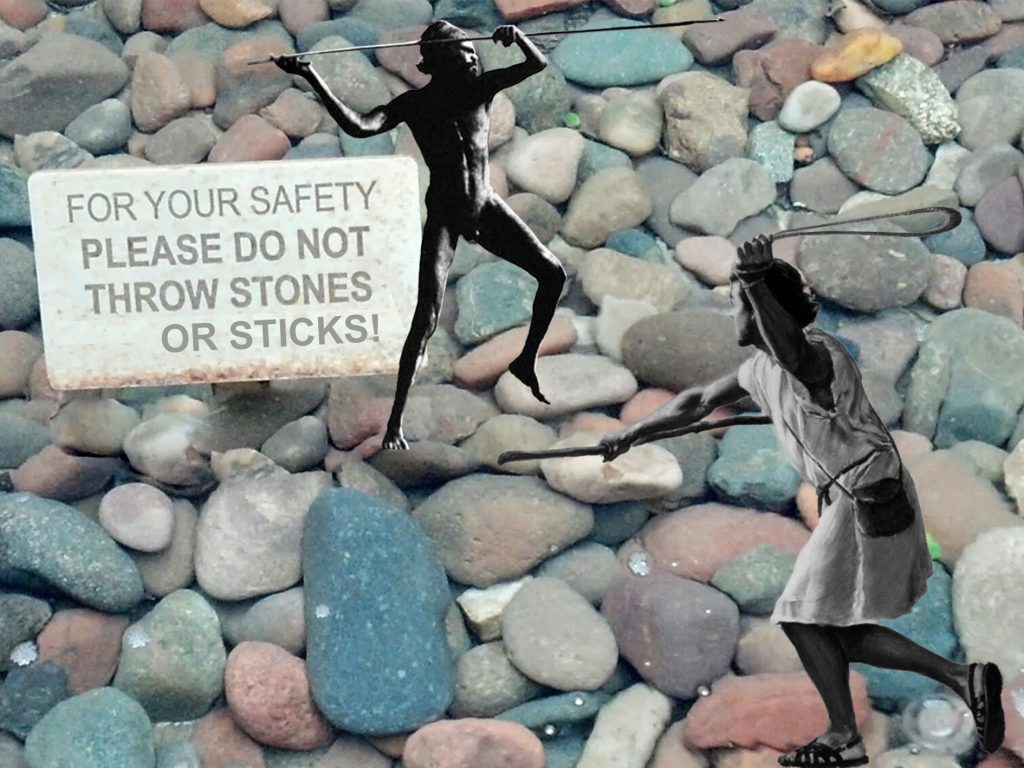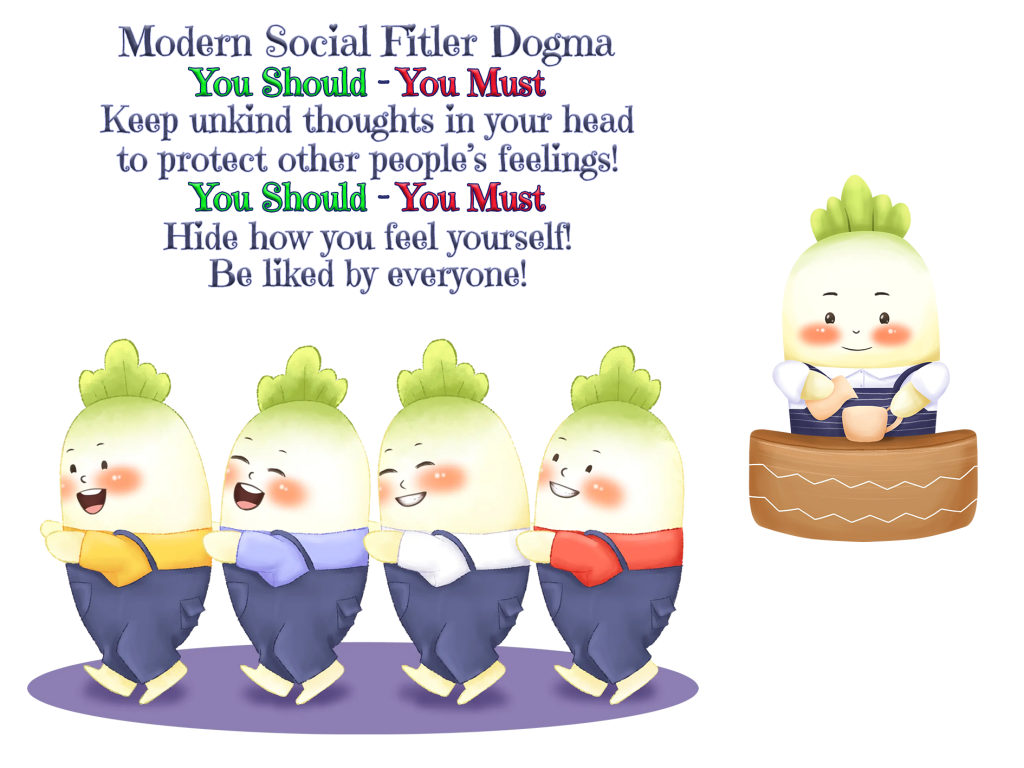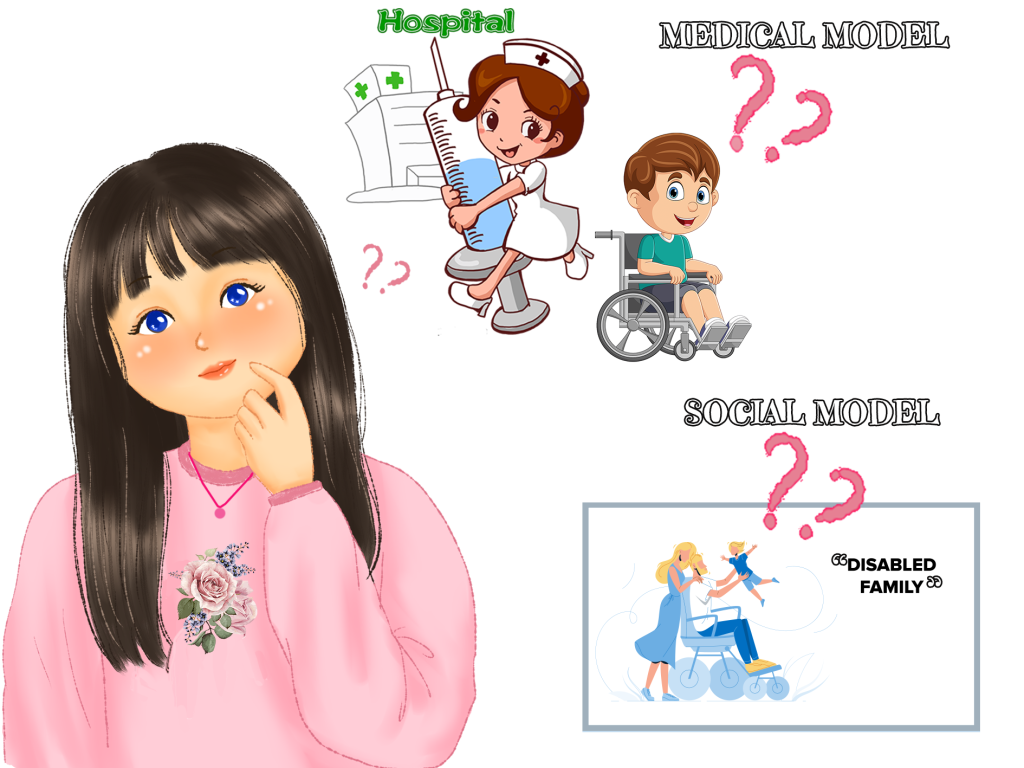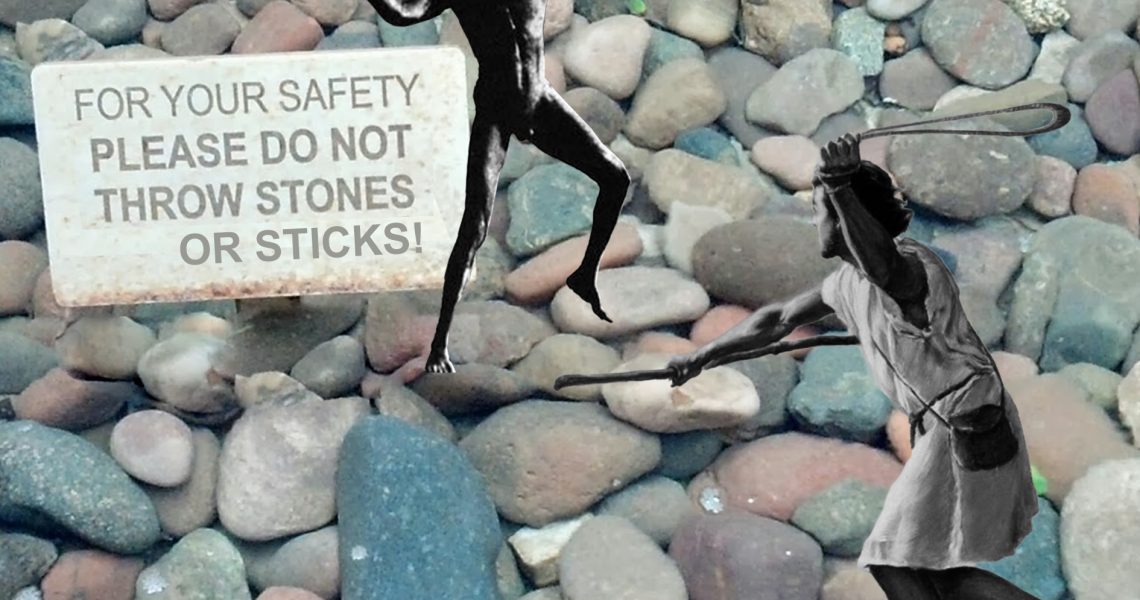No one but self is responsible for how another person feels or reacts to spoken or written words
By Maria
“Sticks and stones may break my bones, but names will never hurt me!”
Once upon a time, people were taught to be tolerant and not get upset about what another person may say regardless of how audacious or foolhardy the words used were.
And yes it is very natural to be fearful of a simpleton walking alone down the street having conversations with themselves, especially if the conversation is angry or agitated because in society today, mental illness and violence are often seen as inextricably linked.
People in a neighbourhood may know Fred, a barefoot local who is often seen walking with agitated muscle movement muttering animated conversations complete with hand gestures with no one. The adults see his ‘carers’ are following a little distance behind and feel comfortable. Oh, there goes harmless Fred out for his daily walk. Yet, a child who sees his strangeness may cry out in fright because they do not have an understanding that his unusual movement and behaviour does not necessarily mean Fred is crazy in the mind and dangerous. Fred may very well have a dangerous side, and while his doctors may know his full mental history neighbourhood Nellie will not.
Society portrays mental illness as violent behaviour. Murder, suicide, aggravated rape, substance abuse, often declare a defence of mental illness to justify the crime. Mental illness is different from physical ailments and both are different to impairment. Some with mental illness commit violent crimes and many with mental impairment are the recipients of violent acts.
People have different views about what ‘unusual behaviour’, and familiarity are, one has to assess the personal danger one is in and then act accordingly.
Having spastic movements does not mean a person is intellectually disabled or mentally ill or sick. Having spasticity means there is a disruption in the person’s muscle movement patterns which interferes with movement and may affect speech and gait.
Physical body damage can appear scary to the untrained onlooker.
In days gone by children were told “If you can’t say something nice then don’t say anything at all.” Meaning nice words are more pleasant to hear so consider what you say before you say it. Be kind rather than cruel.
Today children are taught the following sort of stuff. “Everybody has an invisible ‘filter’ in the front part of his or her brain. A ‘filter’ is something that lets the good stuff go through and blocks the bad stuff to hold it back. Cities use filters to clean drinking water. The clean water goes through the ‘filter’ and the dirt and germs are blocked and held back. Our ‘Social Filter’ helps us say words and use actions that make people have good thoughts about us. We all have kind and unkind thoughts. It is okay to have unkind thoughts, but we should keep them in our head to protect other people’s feelings.”

Is the old fashioned ditty way different to the modern day social filter lectures? Do both ways make a person responsible for how others feel? No. The modern teaching is bad for society as it is emotionally damaging our children.
It is perfectly OK and natural to not be liked by all people or to not like everything everyone else says. It is wrong to describe the human brain in such an outrageous ‘invisible filter’ way.
Free speech creates diversity, tolerance, and understanding and no one has a right to protect another person from experiencing ‘hurt’ feelings.
The modern indoctrination of being liked is somehow more important than being honest about verbalising your thoughts and feelings and allowing others the freedom of individual comment in reaction.
If a grandmother knits her grandson a sweater and her grandson thinks it is ugly and decides he will not wear it but behaves as taught and to protect his grandmother’s feelings he does not tell her, all grandma’s hard work is for nothing. If the grandson were honest and told his grandmother how he felt about the ugly jumper, the grandmother may give the sweater to someone who does like it and after clarifying her grandson’s taste may knit him a sweater he does like and will wear proudly.
The ‘Social Filter’ model is very damaging to human society as it tries to make one person responsible for a second, and third, and fourth, and fifth etc. person’s feelings based on guess work of how other people will react or feel and think by what one says.
One can give a speech with thirty people listening. The result is 31 personal reactions. Some of the people listening will have a preference to reflect on the spoken words, others will have a preference to agree or disagree without reflection, some will take in the information using their senses and others will prefer to get the big picture and disregard the small jangles, some will judge the content based on personal morals and others will be logical and analytical in their judgement. Some people think body language says more than the spoken word. There are so many variables of reaction the mind boggles.
No one is responsible for how another person feels or reacts to spoken or written words. To deny one the opportunity to feel how they actually feel and to speak their own truth about how they see people and the world is immoral on the most basic human ethical standard.
Being silenced by having to stop speaking just in case one’s words may upset someone else is a major cause of personal anxiety and depression in our world today. While people may feel depressed because the sun is not shining, prolonged depression is a coping with loss mechanism. Deeper depression is usually brought about by chronic sadness due to an unidentified loss not being recognised and therefore acknowledged and rationalised. If the source of the loss is not discovered the depression becomes chronic depression and hopelessness sets in.
‘Social Filter’ instruction interferes with personal identity development and personal identity ownership. How can one share thoughts, dreams, touch points and frustrations if by verbalising them one is made responsible for someone else getting upset. There should be no need to shroud reality with social filters or blur one’s real self to a perverted and dispiriting social movement’s model of behaviour.
Tolerance is not built from a basis of dishonest human relationships. It is built from accepting the differences in people. If someone asks another if they like their new hairstyle most often they want an honest answer. Most people have looked at old photos of themselves and laughed at their fashion sense way back then…
A person may be disappointed if others do not like their new car… they do not have to ask opinion or offer anyone a ride.
The Social Filter model lectures to be dishonest just in case the other person does not like what or how something is said even though one is only guessing the anticipated response. The model takes away a person’s confidence that they will be accepted for who they are regardless of how different or the same someone else’s likes, and opinion is.
The medical model of ‘disability’ is said to say the ‘disabled’ are the problem and the social model, a term coined in 1983 by Professor Mike Oliver, says ‘disability’ is a social construct, based upon people being disabled by barriers in society, not by their impairment. The social model instructs that a person is not disabled by a medically defined condition but by the attitude and structure of society.

The medical model is said to say institutions are necessary and the social model says institutions are unnecessary.
The medical model is accused of focussing on the abnormality of a human condition and the social model sings ‘we’ are perfectly normal it is our world that disables us.
Then again the medical model is accused of saying that having a ‘disability’ is negative, your impairment is not part of who you are, whereas the social model says having a ‘disability’ is neutral and should be an invisible to society part of who you are.
The medical model is accused of making disability one’s own problem and the social model says disability stems from disabled malfunctioning in an inaccessible society.
The medical or individual model is accused of trying to fix or cure the disability to make a person appear less ‘disabled’ whereas the social model utters ‘disability’ disappears with a change in societal access interactions.
The medical model is accused of being too heavy in professional opinion whereas the social model says a fix can be found within the individual with a ‘disability’ or anyone (including professionals) who wants people with disabilities to be equally included in society.
Maybe, the American social model started in the 1960’s at a particular Jenedians Crip Camp. Camp Jened was established in 1951 at the foot of Hunter Mountain in the Catskill Mountains, New York and closed due to financial struggles in 1977. At Crip Camp everyone had something going on with their body. “I got run over by a bus.” “Congratulations! What makes you so special?”
Moving on from a camp that started with a traditional summer camp structure, Camp Jened became a summer Hippy camp described as a “loose, free-spirited camp designed for teens with handicaps”. Teenagers were allowed to be teenagers and the counsellors did not act like babysitters. The camp catered for impaired children, teenagers, and adults.
Campers formed bonds, played music, some became romantically involved and later married and some experimented with marijuana. Political and social conversations were had. Family life was discussed. Common visions were formed. Crip Camp was described as an escape to Utopia because there was no stigma, no shame or isolation because there was minimal adult supervision and no outside world to worry about. A conclusion was formed that the problem existed with people without ‘disability’.
It is ironic that this type of ‘institutional setting’ is something that the social model of ‘disability’ despises.
Forget the models remove the disability label and start appreciating every person with body damage has a normal way of living their own life.
